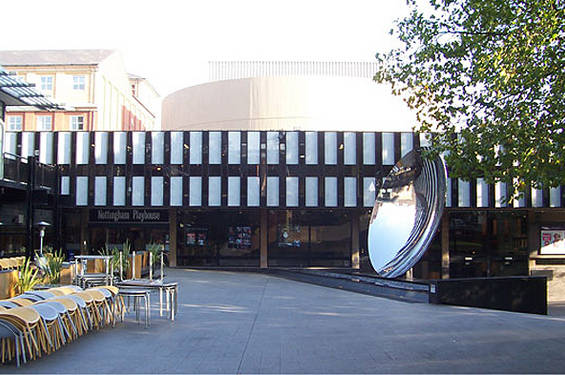Thursday 6 March 2014
Another Palazzo Building
In Cambrian Place, Swansea another example of the Palazzo style , called Pembroke Buildings. Again 3 storeys with 5 bays. However unlike the others in Aberdare and Cardiff this has a portico to the main entrance.
Designed by architect H C Portsmouth the building has Portland stone below and Bath stone above. Early twentieth century.
Labels:
bath stone,
H C Portsmouth,
Palazzo,
Portland stone,
Swansea
Tuesday 19 November 2013
Windsor Place, Cardiff
 |
| Windsor Place Victorian terrace |
Saturday 16 November 2013
Swansea University Campus
 |
| W front of Singleton Abbey |
 |
| Library 1937 |
In 1921 Singleton Abbey became the administrative centre of the then new University College. The first permanent university building was the library opened in 1937, made of brick with Portland stone. It has certain classical elements such as the cornice and frieze and the simple geometry of the windows. (It obviously lacks other classical features such as columns).
Designed by the same architectural firm of Percy Thomas the Fulton building is another grade II listed building. With large expanses of glazing it is built around a concrete frame and faced with brick.
Opened in 1984 the Taleisin theatre and art gallery continues with the brick but the shape is polygonal and utilitarian. It was designed by Peter Moro who is famous for other theatres such as the Nottingham Playhouse.

Moro came to Britain from Germany and worked for 2 years under Berthold Lubetkin, a notable modernist architect. He went on to work on the Royal festival Hall and designed other theatres in Hull and Plymouth.
Monday 4 November 2013
Midland (now HSBC) Bank, Aberdare
 |
| The grand Palazzo ex Midland Bank with National School in foreground of about the same period |
This bank was designed by Bristol architect, William Gingell who co-incidentally worked with T R Lysaght, the architect who designed the Cardiff building.
 |
| Rock faced dressed stone on the façade of the old Midland Bank |
Labels:
Aberdare,
banks,
bath stone,
Gingell,
Lysaght,
newbridge stone,
Palazzo
Monday 28 October 2013
Old Nat West Bank, St Mary's Street.Cardiff
Vermiculation refers to the wavy patterns on the quoins and arches that appear to be like worm casts. The key stones for these arches are taken by occupied by dramatic bearded heads.
Newman, J. 1995 The Buildings of Glamorgan Yale
Labels:
banks,
Cardiff,
Charles Barry,
Lysaght,
Palazzo,
quoins,
vermiculation
Friday 17 May 2013
Iron Church
 |
| St Matthew, Abernant |
Corrugated iron first patented in 1829 soon became the material of choice for prefabricated buildings throughout Britain and the Empire. By the 1850's specialist companies produced catalogues advertising a wide range of buildings for use in farming, mining, railway and manufacturing industries as well as residential cottages, village halls, boat houses, billiard rooms and churches and chapels.
Corrugated iron buildings provide us with a reminder of the speed of the industrial revolution, with fluid labour markets willing to travel to find work, causing massive social change. As a result settlements near the new industrial centres needed buidlings that could be quickly and cheaply erected. Buildings like this church would have been delivered to the nearest railway station and erected using relatively unskilled labour.
This church, from 1888, was built around a timber frame and lined with timber tongue and groove boards for the walls and ceiling. It cost £254 to build. The only indicator from the outside that this is a religious building is the use of arched lights in the upper part of the wooden windows on the side walls.
http://www.bbc.co.uk/radio4/history/making_history/making_history_20061205.shtml
http://en.wikipedia.org/wiki/Tin_tabernacle#Examples_in_Wales
Also Jones, A.V (2012) Churches of the Cynon Valley Dinefwr Press
Labels:
Abernant,
Church,
corrugated iron,
prefabrication
Friday 8 February 2013
Original terraced house
 |
| Interior with fire place and solid stairs |
 |
| House front |
Cadw has described what it is doing with the building below
Many people recognise the importance of listed buildings and conservation areas and understand that care must be taken to ensure that traditional materials are used in their repair and maintenance. However, many of buildings in the south Wales Valleys have suffered decades of alterations which mean the distinctiveness of our Valleys towns is at risk of being diluted or lost completely.
The Cadw building will also become a learning resource for those who work or live in traditional Valleys housing in Wales. The project aims to promote understanding of the importance of retaining the character and history of Valleys housing. It will also provide practical advice on technical issues such as thermal performance to demonstrate that keeping original features in good repair really does pay, environmentally and economically.
http://cadw.wales.gov.uk/about/news/6456503/?lang=en
Subscribe to:
Posts (Atom)





